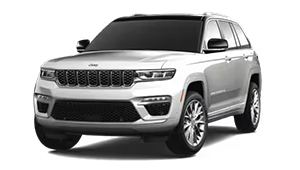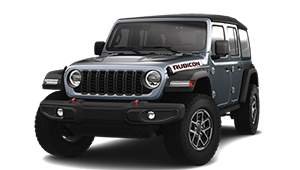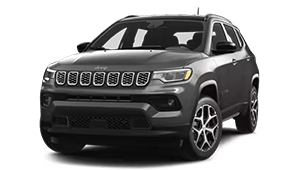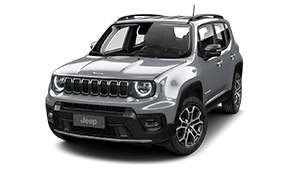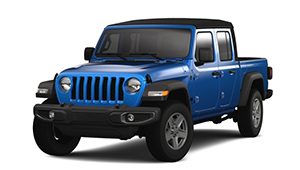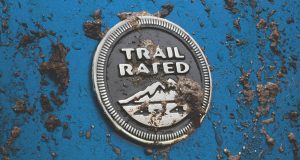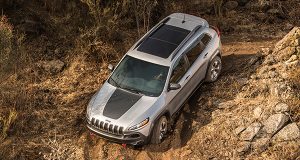Jeep® 4x4 Systems FAQ
FREQUENTLY ASKED QUESTIONS
DRIVING A 4X4
What is the difference between all-wheel drive, full-time and part-time 4x4 systems?
Why can't you use a part-time 4x4 system on dry surfaces?
Why does "crow hop” occur?
What is the difference between all-wheel drive, full-time and part-time 4x4 systems?
A Full-Time 4x4 system operates by default in four-wheel drive and can travel safely and securely on all surfaces. The system uses either a clutch or a center differential to allow the front and rear driveshafts to turn at varying speeds. Whether the road is covered in snow or is dry as dirt, this system can be utilized confidently.
All-Wheel Drive (AWD) is almost the same as full-time Four-Wheel Drive (4WD). It is also a system that powers all four wheels of a vehicle at all times. It can be used full-time on all surfaces, including pavement, like full-time 4WD. The only difference is that a "4-low" setting is not available on AWD vehicles. Due to the lack of "low range", AWD vehicles are much less capable in off-road settings than full-time 4WD vehicles, but work perfectly well on-road.
Part-Time 4WD operates by default as a two-wheel drive vehicle. Unlike the full-time system, part-time 4WD doesn’t use a center differential. The system instead locks the front and rear driveshafts, making it better for use exclusively during off-road travel or challenging road conditions. When on dry pavement or under normal driving conditions, the driver should switch to the vehicle’s two-wheel-drive mode. If drivers use Part-Time 4WD excessively, they may experience driveline noise or binding that can lead to overheating or early part failure.
On-Demand 4WD systems operate primarily in two-wheel drive during normal driving conditions. When a slippery surface such as snow or mud is encountered, 4WD is automatically engaged and power is transferred to the secondary axle.
QUADRA-LIFT® AND SELEC-TERRAIN® SYSTEMS
How does the Selec-Terrain® dial work?
What if I never use the Selec-Terrain® switch?
Does the vehicle need to be parked or moving to operate the Quadra-Lift® Air Suspension or Selec-Terrain® system?
How fast can I go when using the Quadra-Lift® Air Suspension System?
How does the Selec-Terrain® dial work?
The different settings offered from Selec-Terrain® are designed for specific terrains or conditions. Each setting will optimize the vehicle’s systems for that terrain. Switching between settings is easy using the rotary knob. A variety of settings deliver ultimate driving stability by coordinating vehicle systems, including throttle control, transmission shifting, transfer case, traction control and Electronic Stability Control.
HIGH RANGE/LOW RANGE
When do I use the 4x4 Low-Range mode?
How fast can I drive in 4x4 Low-Range?
Can I shift into 4x4 Low-Range at any speed?
Can I shift into 4x4 Low-Range when stopped?
When do I use the 4x4 High-Range mode?
How fast can I drive in 4x4 High-Range?
Can I shift into 4x4 High-Range at any speed?
How long can I drive in 4x4 High-Range?
When do I use the 4x4 Low-Range mode?
Low-Range is for extreme off-road situations needing more torque with low speed, such as getting out of a tough driving spot or steep climbs. More torque does not mean more traction though, so it can be unsafe on slippery surfaces like snow, ice or mud.
OFF-ROAD GUIDE
Always check your vehicle before going off-road. Make sure your battery is fastened, all hoses are in good condition and oil and fluids are topped off, including fuel. Be sure that all four tires are in good condition and have the proper tire pressure. Avoid travelling alone, especially into unfamiliar territory.
GLOSSARY
A - B
Approach Angle
A measure of how steep a hill or slope can be for the vehicle to begin its climb without scraping or hitting the front undercarriage. Useful when needing to know a vehicle’s ability to navigate through severe off-road terrain with boulders and logs.
C - D
E - H
J - N
Jounce/Rebound
Jounce is when the suspension attached to the tires compresses when going over a bumpy surface. If a wheel is at “full jounce”, the wheels are compressed to their limits. Rebound is the opposite, when the coil spring expands (as occurs when driving on a regular surface).
O - S
Open-Center Differential
Transmits 50% of the torque to both wheels on the same axle. If you are running an open differential and you hit a loose patch, the differential will send power to the wheel that is encountering the least resistance. This results in wheel spin on the loose patch side, while the solid contact side barely moves.

